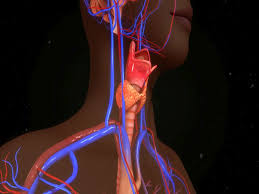larynx cancer:laryngectomy
overview
The larynx, also called the voice box, has a number of functions. Its main function is a conduit for air to enter your lungs. Also, the larynx works to prevent food, liquids and saliva from falling into your lungs and causing pneumonia. Finally, the larynx is responsible for creating voice.
- Supraglottis: This part of the voice box is above the vocal cords. Subsites of the supraglottis include the epiglottis above the hyoid bone, the epiglottis below the hyoid bone, the aryepiglottic folds, the arytenoids and the false vocal cords (also called the ventricular folds).
- Glottis: This part of the voice box is hidden behind the thyroid cartilage. It is responsible for producing your voice. It is made up of the true vocal cords. The anterior commisure refers to the location in the front of the larynx where the vocal cords meet.
- Subglottis: This part of the voice box extends from the bottom of the vocal cords to one centimeter below where it joins with the trachea (or windpipe).
Types of laryngectomies
- Total laryngectomy – This procedure removes the entire voice box. The surgeon will make incisions in the neck to remove the larynx and then create a laryngostome to enable you to breathe through the neck.
- Partial laryngectomy – Only a portion of the larynx is removed in a partial laryngectomy, which may be performed as an open procedure or as a minimally invasive robotic procedure. For example, a supraglottal laryngectomy removes only the top portion of the larynx.
- Total laryngopharyngectomy – This procedure removes the entire larynx, along with the part of the pharynx closest to this structure.
Some of the following may be symptoms of laryngeal cancer, or they could be symptoms of other conditions:
- A sore throat or cough that does not go away
- A change in your voice, such as hoarseness, that does not get better after two weeks
- Any pain or other trouble when you swallow
- Ear pain
- A lump in the neck or throat
- Dysphonia (problems producing voice sounds)
If you have any of the following symptoms, see your doctor right away:
- Dyspnea (trouble breathing)
- Stridor (breathing that is high-pitched and noisy)
- Globus sensation (a feeling like there is something in the throat)
- Hemoptysis (coughing up blood)
Dr. Shilpi Sharma Best Larynx Cancer Doctor In Gurgaon. Laryngeal cancer is treated with radiation therapy, chemotherapy, or surgery. Sometimes, it is treated with a combination of these methods.
Radiation therapy:
Radiation therapy delivers high energy x-rays to the tumor to kill cancer cells. By focusing the radiation on the cancer cells, the damage to normal structures can be minimized.
chemotherapy:
Chemotherapy is the use of medications to kill or to slow the growth of rapidly multiplying cancer cells. These medications are often given intravenously (through a needle into a blood vessel) and can have major side effects.
surgery:
Surgery for early laryngeal cancer is done to allow the patient to keep the major functions of the larynx, including speaking and swallowing. The goal is to take out the cancer without having to remove the entire larynx. In cases of advanced laryngeal cancer, a laryngectomy (complete removal of the larynx) is often performed.




